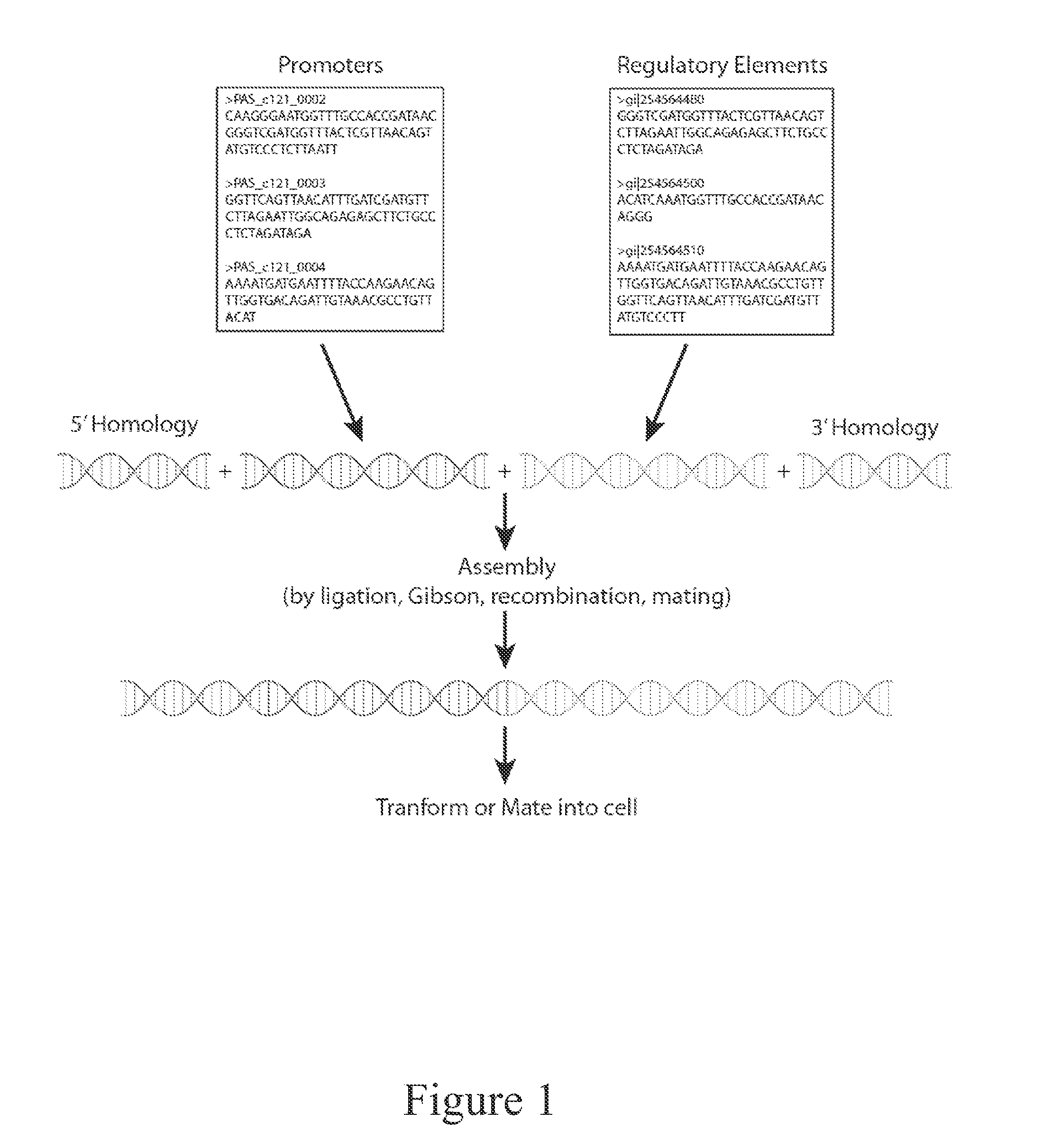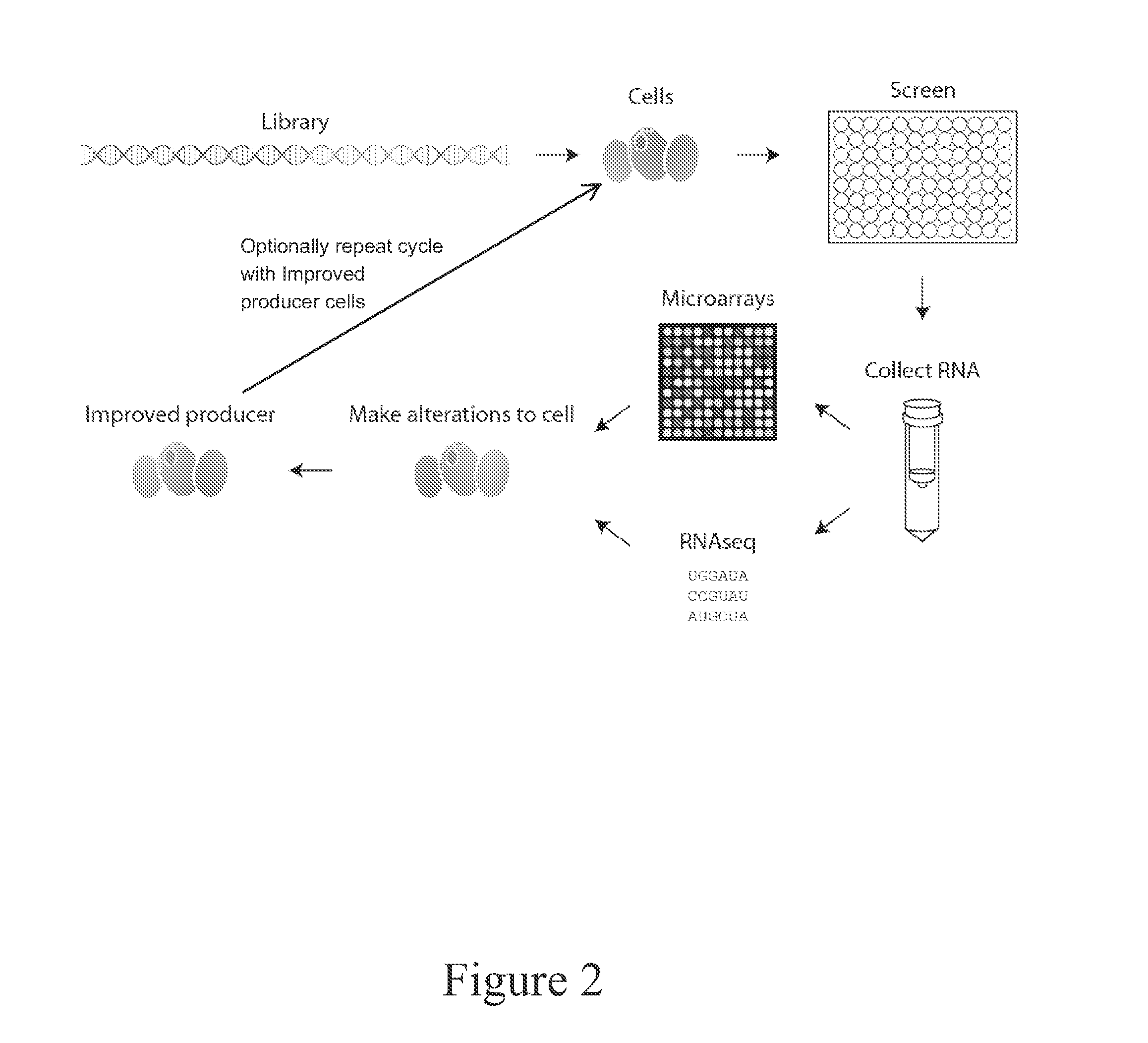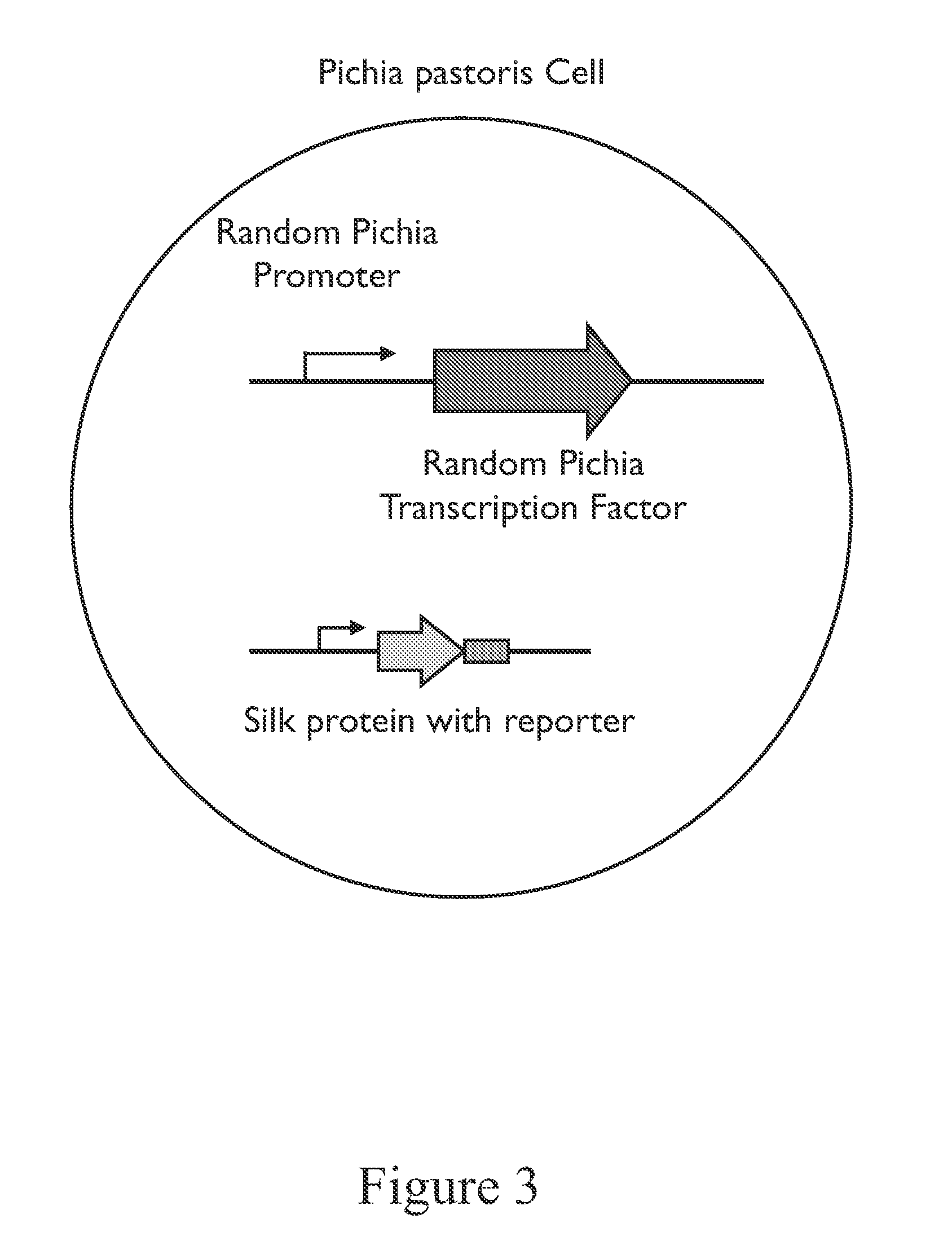Cellular Reprogramming for Product Optimization
a product optimization and cellular reprogramming technology, applied in the field of strain optimization, can solve the problems of inability to generate an adaptive response, complex and time-consuming process for producing a desired product, and lack of growth and metabolism of cells, so as to achieve low screening, large search space, and large perturbation
- Summary
- Abstract
- Description
- Claims
- Application Information
AI Technical Summary
Benefits of technology
Problems solved by technology
Method used
Image
Examples
example 1
Method for Improving Metabolite or Small Molecule Production
[0136]A cell capable of producing a desired protein, macromolecule or metabolite (i.e., products) is transformed or mated to introduce a library of DNA elements with one or more pairs of genetic promoters and genes encoding regulatory elements (e.g., transcription factors or other signaling proteins). The resulting cells are isolated on selective media plates (by auxotrophy or antibiotic resistance marker) and individual clones are isolated for further testing. Individual clones are tested by selective plate based assay or liquid culture assay under product producing conditions. The cells are analyzed for production of products in the culture broth and / or inside the cell and products may require purification. A metabolite product is detected and quantified by any combination of enzymatic assay, liquid chromatography, mass spectrometry, gas chromatography, colorimetric assay, electrophoretic mobility assay, nuclear magnetic ...
example 2
Generating a Library of Promoters and Regulatory Elements for Pichia Pastoris
[0138]We describe here a method for performing whole cell evolution by fusing random Pichia promoters to random Pichia nucleotide binding proteins (e.g., transcription factors) to achieve changes in cellular regulation and metabolism. These changes modify silk production and secretion.
[0139]The recent sequencing of Pichia pastoris identified 5,313 protein coding genes. Work with pfam and other prediction tools allowed us to identify ˜350 putative transcriptions after removing DNA polymerases, telomerases, helicases, and other obvious non-transcription factor proteins as described below. Pichia promoters (up to a few kilobases upstream of each open reading frame) are isolated from a subset or the entirety of protein coding regions in the genome. Using these two sets of parts we create ˜1.8M single combinations to create new regulatory dynamics that perturb the cell.
[0140]A Pichia strain is transformed with ...
example 3
Robotic Setup for High-Throughput Screening of Host Cells
[0148]A setup designed for high-throughput screening of secreted protein production in yeast is described herein. This setup consists of five main parts: colony picker, incubating shaker, centrifuge, liquid handling robot and a scanner / detector.
[0149]The colony picker is used to select individual clones (colonies) from the agar media plates and place each into a separate well of a multi-well culture plate. We use a Genetix QPix for this purpose
[0150]The incubating shaker is capable of a high density for deepwell culture plates and be able to control for optimal temperatures, shaking rates and humidity to achieve conditions similar to those that will be used for production. In a preferred embodiment, for Pichia pastoris, the optimal conditions are achieved in 96-well deep culture plates (2.4 mL total volume), at temperatures between 15° C. and 30° C., and at shaking rates up to 1000 rpm with a 3 mm throw. In an embodiment, an I...
PUM
| Property | Measurement | Unit |
|---|---|---|
| Tm | aaaaa | aaaaa |
| temperatures | aaaaa | aaaaa |
| time | aaaaa | aaaaa |
Abstract
Description
Claims
Application Information
 Login to View More
Login to View More - R&D
- Intellectual Property
- Life Sciences
- Materials
- Tech Scout
- Unparalleled Data Quality
- Higher Quality Content
- 60% Fewer Hallucinations
Browse by: Latest US Patents, China's latest patents, Technical Efficacy Thesaurus, Application Domain, Technology Topic, Popular Technical Reports.
© 2025 PatSnap. All rights reserved.Legal|Privacy policy|Modern Slavery Act Transparency Statement|Sitemap|About US| Contact US: help@patsnap.com



